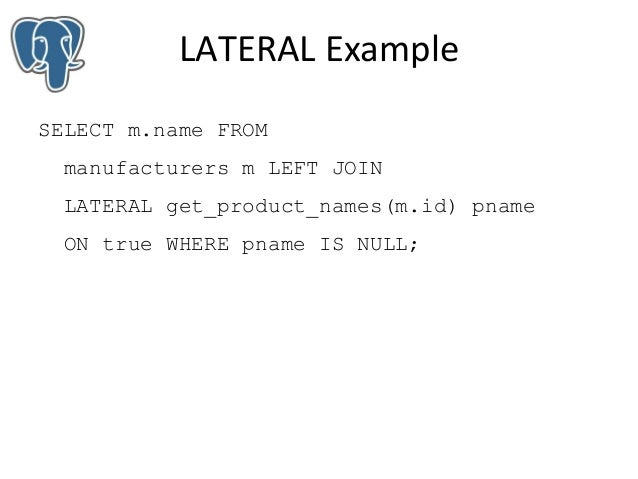
Summary: this tutorial introduces you to PostgreSQL materialized views that allow you to store result of a query physically and update the data periodically. In PostgreSQL view tutorial, you have learned that views are virtual tables which represent data of the underlying tables. Simple views can be also updatable.
PosgreSQL extends the view concept to a next level that allows views to store. A materialized view has many of the same properties as a table, but there is no support for temporary materialized views or automatic generation of OIDs. For this example , we will create 30accounts with an average of transactions each.
All the sample code and data is available on Github. Our query that we will optimize for is finding the balance of accounts. To start we will create a view that finds balances for all accounts. A PostgreSQL view is a saved query. Once create selecting.
By using Materialized Views in PostgreSQL, you can access data faster by physically holding the data in the view. I will go over an example and explain the details. In my example I will use the table I created in the article “How to Create a View in PostgreSQL“.
We create a materialized view with the help of the following script. I finally got a chance to give it a try. However, slow queries don’t automatically mean you should reach for the materialized view hammer.
CREATE MATERIALIZED VIEW my_view AS your query here. For example, if you are accessing the view infrequently in the background to generate reports, you probably don’t care much about the. So for the parser, a materialized view is a relation, just like a table or a view. When a materialized view is referenced in a query, the data is returned directly from the. I use materialized view in pgsql and i wonder if there is a way to refresh a materialized view for example A after that another materialized view B has been completely refreshed.
Refresh a materialized view. Snapshot retrieves data very fast. DBA blog on Oracle,Oracle clouDevOps, PostgreSQL and Other Databases. This is mainly Oracle DBA blog which also cover performance tuning,oracle cloud dbaas,oracle rac dataguaractive dataguarRMAN and other topics like Linux,AWS,Cassandra and other databases. Please subscribe below to get update on my blog.
The rule is only used to populate the table, references in queries refer to the materialized data. This is a minimal implementation, but should still be useful in many cases. Currently data is only populated on demand by the CREATE. REFRESH CONCURRENTLY to Materialized Views.
Users selecting from the materialized view will see incorrect data until the refresh finishes, but in many scenarios that use a materialized view , this is an acceptable tradeoff. Have a view definition stored in the database which we can use for reference. Create functions which will read that view definition, and create a materialized table with all the same columns as the reference view , create triggers on all tables the view depends on to keep the materialized table fresh within a transaction. A materialized view is defined as a table which is actually physically stored on disk, but is really just a view of other database tables.
In PostgreSQL , like many database systems, when data is retrieved from a traditional view it is really executing the underlying query or queries that build that view. This is great for better representation of data for users, but does not do anything to. For example , you can create a view that counts the number of orders and totals the order volume for all orders for each month. You can then query this view and limit by month to find the data you need for a specific month.
We can use the same query as the example from the View section. Creating a materialized view using SQLAlchemy: This lets us create a materialized view by passing a SELECT statement generated with SQLAlchemy core to our custom create_mat_view function. Examples of Materialized Views. You use a SELECT statement to create the materialized view and the result is persisted as a table-like form.
When you select something from that.
Hiç yorum yok:
Yorum Gönder
Not: Yalnızca bu blogun üyesi yorum gönderebilir.